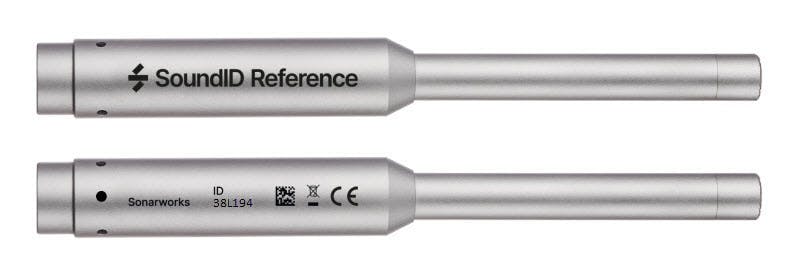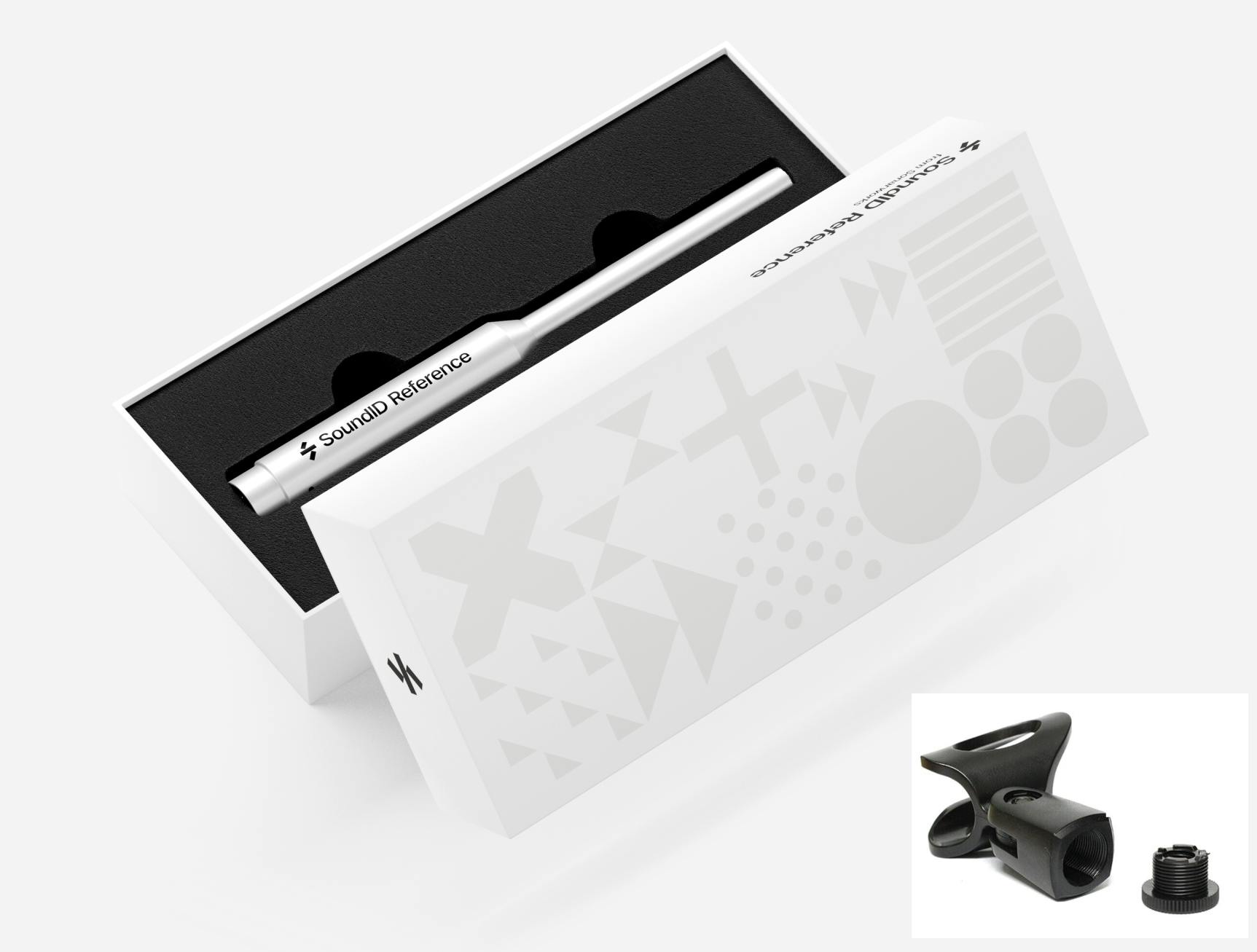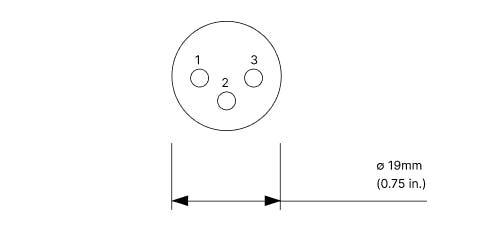Mar 11, 2024
SoundID Reference Measurement Microphone (2024) user manual

In this Manual:
6.1.
Specifications6.2.
Dimensions6.4.
Operating panels8.1.
Specifications8.2.
Dimensions9.1.
Vulnerable users9.2.
Intended use9.3.
Installation9.4.
Usage9.5.
Maintenance9.7.
Disposal1. Disclaimer
Sonarworks SIA (“Sonarworks”) makes no representations or warranties concerning this user manual (“Manual”), and, to the maximum extent permitted by law, expressly limits its liability for breach of any warranty that may be implied to the replacement of this Manual with another. Sonarworks reserves the right to revise this Manual at any time without incurring an obligation to notify any person of the revision.
The information provided in this Manual contains general descriptions and/or technical characteristics of the performance of the Product. This Manual is not intended as a substitute for and is not to be used for determining the suitability or reliability of the Product for specific user applications. Any such user or integrator must perform the appropriate and complete risk analysis, evaluation, and testing of the Product concerning the relevant specific application or use thereof. Neither Sonarworks nor any of its affiliates or subsidiaries shall be responsible or liable for misuse of the information contained herein. Please notify us if you have any suggestions for improvements or amendments, or if you have found any errors in this manual.
All pertinent state, regional, and local safety regulations must be observed when installing and using this Product. The Product shall only be used by persons who have fully read and understood the contents of this Manual. It is the Product owner's responsibility to make sure each person who uses the Product has read this Manual and follows the instructions and warnings provided. Failure to do so may result in damage to property and/or severe or fatal injuries.
All rights reserved. No part of this publication may be reproduced, distributed, or transmitted in any form or by any means, including photocopying, recording, or other electronic or mechanical methods, without the prior written permission of the publisher. For permission requests, please contact the publisher, addressed “Attention: Permissions Coordinator,” using the contact information below.
→
Sonarworks SIA
→
Šmerļa iela 3, Building No. 5, Riga, LV-1006, Latvia
2. Product identification
This Manual applies to the SoundID Reference Measurement Microphone (2024) ("Product"). The Product can be identified by the profile number ("Profile ID") associated with the individual microphone calibration profile ("Microphone Profile"). The Profile ID is printed on the measurement microphone ("Microphone") product element. Learn more in Section 7.1.
The Product can be identified by a Profile ID of 38L194 or higher in alpha-numerical order.

For other (older) Sonarworks microphone products with a Profile ID of 38L193 or lower, see these user manuals:
3. Product documentation
The latest version of the documentation is available under the Legal page on the Sonarworks website. Supplementary documentation is available under the Support, Resources, and Downloads pages:
To receive documentation, user instructions, and technical information, or provide documentation feedback, or obtain information about special tools, materials, and service-related questions, contact Sonarworks Support or Legal teams by submitting a Support Request, or by using the contact form under the Contact Us page on Sonarworks website:
4. Intended use and reasonably foreseeable misuse
The Product is intended to be used as a tool for making high-precision measurements of acoustic sound pressure and acoustic pressure differences within the audible frequency spectrum of 20Hz to 20kHz.
The Product shall be used with the following software and components only:
→
SoundID Reference software with Sonarworks-provided Microphone Profiles
→
Audio interfaces with +48V Phantom Power support
→
Balanced XLR to XLR cable as the connection medium between the Microphone and the audio interface used
→
Third-party acoustic measurement software/hardware with Sonarworks-provided Microphone Profiles (the third-party software/hardware must be capable of employing Sonarworks-provided Microphone Profiles in TXT file format; learn more in Section 7.4).
5. Product elements
The SoundID Reference Measurement Microphone (2024) includes three product elements:
→
SoundID Reference Measurement Microphone ("Microphone")
→
SoundID Reference Microphone Profile ("Microphone Profile")
→
SoundID Reference Microphone Clip ("Microphone Clip")
Total Product weight and dimensions with packaging:
→
Incl. outer shipping box: 25 x 12 x 7mm (1 x 1/2 x 1/4"); 271g (9.6oz)
→
Excl. outer shipping box: 22 x 10 x 4,5mm (7/8 x 3/8 x 3/16"); 256g (9.0oz)

6. SoundID Reference Measurement Microphone
6.1. Specifications
Parameter
Unit
Device name
SoundID Reference Measurement Microphone
Type
Electret condenser
Weight
64g (2.3oz)
Chemical composition
Aluminium chassis
Transducer type
MEMS
Frequency response
20Hz to 20kHz
Polar pattern
Omni-directional
Output impedance
300Ω
Open circuit sensitivity
14mV/Pa
Power requirements
48V phantom
Maximum sound level
124dB SPL
Signal-to-noise ratio
65dB (A)
Connector type
3-pin XLR
6.2. Dimensions
Figure 1: Microphone dimensions

6.3. Frequency response
Figure 2: microphone frequency response, measured in an anechoic chamber

Note: Individual Microphone units are subject to deviations from the frequency response shown in the Figure 2 graph above. Deviations are compensated for via the included Microphone Profile, as explained in Section 7.1.
6.4. Operating panels
The interface of the Microphone consists of a single male XLR connector, to be used as a point of connection between the Microphone and a peripheral audio interface. The Microphone XLR connector is intended to be connected to a balanced XLR female connector only.
Figure 4: Microphone pinout diagram

1.
Ground / shield
2.
Positive / hot
3.
Negative / cold
6.5. Product compliance
This product complies with all relevant European Union Directives and the following relevant product safety standards:
→
EN 55032:2015 + AC:2017 + A11:2020 (Electromagnetic compatibility of multimedia equipment - Emission Requirements (CISPR 32:2015 + COR1:2016))
→
EN 55035:2017 + AC:2020 (Electromagnetic compatibility of multimedia equipment - Immunity requirements (CISPR 35:2016, modified))
While using the Microphone, magnetic fields generated by other electronic devices may induce non-destructive noise on the Microphone capsule. The distortion introduced by electromagnetic fields is not damaging to the Microphone or the accuracy of the intended acoustic measurement: Product performance deviations and performance thresholds are accounted for when used with the SoundID Reference software ("Sonarworks-native use").
7. SoundID Reference Microphone Profile
7.1. Microphone Profile and Profile ID
The frequency response of each Microphone unit has been individually measured, and a unique Microphone Profile is provided containing the measured frequency response data. The individual Microphone Profile is associated with a Profile ID, printed directly on each Microphone unit, as shown in Figure 5 below:
Figure 5: Microphone Profile ID (example)

Each Product unit includes a unique Microphone Profile, associated with three separate profiles to be used for various angle measurements:
→
0° profile
→
30° profile
→
90° profile
For Sonarworks-native use, the SoundID Reference Measure application ("Measure app") employs the 30° profile for 2.0 stereo configuration measurements, while 2.1-9.1.6 multichannel configuration measurements employ both 30° and 90° profiles.
7.2. Sonarworks-native use
To achieve optimal results with Sonarworks-native use of the Product, the Microphone Profile must be employed during the measurement process:
1.
Click on the 'SoundID Reference microphone' option during the "Hardware Setup" stage in the Measure app.
2.
Enter the Microphone Profile ID and click 'Next' to load the Microphone Profile.
Once the Microphone Profile is loaded in the Measure app (see example below), the correct angle profile(s) are applied automatically, based on the configuration selected during a previous step in the Measure app.


7.3. Microphone Profile downloads
For offline use, third-party software/hardware use, or general backup purposes (in accordance with Section 4), the Microphone Profile files can be downloaded in a ZIP archive from the Sonarworks website:
1.
Go to the Downloads page on the Sonarworks website: https://www.sonarworks.com/soundid-reference/download
2.
Navigate to the "Measurement microphone profile downloads" section.
3.
Enter the Microphone Profile ID and click on the 'Download profile' button.
4.
Extract the downloaded ZIP archive to access the Microphone Profile files.

The download will contain two files in the Sonarworks-native SWMIC file format and three files in TXT file format for third-party use:
→
30° Microphone Profile in SWMIC file format
→
90° Microphone Profile in SWMIC file format
→
0° Microphone Profile in TXT file format
→
30° Microphone Profile in TXT file format
→
90° Microphone Profile in TXT file format
7.4. Offline and third-party use
For Sonarworks-native offline use, the Measure app allows for the Microphone Profile to be loaded manually, in case there is no internet access on the computer ("Machine") used for the measurements at the given moment:
1.
Download and extract the Microphone Profile files as described in Section 7.3 above
2.
Transfer the files to the needed Machine using a USB flash drive, or another offline transfer method
3.
Click on the 'Different measurement microphone' option during the "Hardware Setup" stage in the Measure app, and click 'Next' to proceed
4.
Click on 'Browse' and select the Microphone Profile TXT file
a)
For 2.0 stereo configuration measurements, load the 30° TXT file.
b)
For 2.1-9.1.6 multichannel configuration measurements, load the 90° TXT file.


Note: For Sonarworks-native use, 2.1-9.1.6 multichannel measurements require both 30° and 90° profiles to be used, which can only be done by entering the Profile ID in the Measure app as described in Section 7.2. Loading only the 90° TXT file manually will result in reduced measurement accuracy.
For third-party use, the Microphone Profile files can be downloaded and employed in TXT file format as described in Section 7.3.
Note: Sonarworks is not responsible for any compatibility-related issues assiocated with third-party use of the Microphone Profile. It is the user's responsibility to resolve any such issues according to the third-party software/hardware legal guidelines, documentation, and other sources of information.
8. SoundID Reference Microphone Clip
8.1. Specifications
Device name
SoundID Reference Microphone Clip
Weight
6g (0.21oz)
Chemical composition
Plastic composite with iron
Clip type
Straight (non-tapered)
Clip diameter
21mm (13/16")
Thread size
15.8mm (5/8")
Thread adapter
15.8mm Male to 9.5mm Female (5/8" to 3/8")
8.2. Dimensions
Figure 6: Microphone Clip dimensions

9. Safety information
9.1. Vulnerable users
This Product is not suitable for use by children. If children use any product element, make sure that they use it according to all safety instructions specified in this Manual.
9.2. Intended use
Do not use this Product for anything other than its intended use, as described in Section 4 of this Manual.
9.3. Installation
Make sure +48V Phantom Power is turned OFF while the XLR connections are being made to protect the internal electronic components of the Microphone from electric surge damage.
9.4. Usage
→
Do not use damaged XLR cables. Unsecured connections can cause electric shock or fire.
→
Do not pull the cable excessively when disconnecting it from the device. Doing so may cause electric shock or fire.
→
Do not attempt to disassemble the chassis of the device. If parts of the chassis are loose, contact the manufacturer immediately.
→
Only use accessories that are compatible with the product. Using incompatible accessories may result in injury and/or property damage.
→
Do not drop or cause excessive impact to the device. This may damage your device or its internal components, cause the device to malfunction, or shorten its lifespan. This may also cause overheating, combustion, fire, or other hazards.
→
Never place the device on or in heating devices, such as microwave ovens, stoves, or radiators. The device may explode when overheated.
→
Avoid exposing the device to high external pressure. This can lead to an internal short circuit and overheating.
→
Avoid exposing the device to very cold or scorching temperatures. Extreme temperatures can damage the device, and reduce its life span.
→
Do not store the device near or in heaters, microwaves, hot cooking equipment, or high-pressure containers. Your device may overheat and cause a fire.
→
Do not use or store your device in areas with high concentrations of dust or airborne materials. Dust or foreign materials can cause your device to malfunction and may result in fire or electric shock.
→
Do not expose the device to heavy smoke or fumes. Doing so may damage the electrical components of the device or cause it to malfunction.
→
If you use a hearing aid, contact the manufacturer for information about radio interference. The radio frequency emitted by your device may interfere with some hearing aids. Before using your device, contact the manufacturer to determine whether or not your hearing aid will be affected by radio frequencies emitted by the device.
→
Do not store or carry flammable liquids, gases, or explosive materials in the same compartment as the device, its parts, or accessories.
→
If any part of the device is broken, smokes, or emits a burning odor, stop using the device immediately.
→
Keep your device dry. Humidity and liquids may damage the parts or electronic circuits in your device.
→
Do not turn on your device if it is wet. If your device is already on, turn it off, then, dry the device with a towel and take it to a service center.
→
Do not expose your device to direct sunlight for extended periods. Doing so may cause the device to malfunction, resulting in damage to the device.
→
Do not store your device with metal objects, such as coins, keys, and necklaces. Your device may be scratched or may malfunction.
→
Do not paint or put stickers on your device. Paint and stickers can clog moving parts and prevent proper operation of the device.
→
Do not drop your device or cause impacts to your device. Your device may be damaged or may malfunction. If bent or deformed, your device may be damaged, or parts may malfunction.
→
If you transport the device to another location, take care to ensure that it is properly secured. This will avoid fall damage or impacts on the equipment.
9.5. Maintenance
Prevent the device from being exposed to dust, sweat, ink, oil, and chemical products, such as cosmetics, antibacterial spray, hand cleaners, detergents, and insecticides. The exterior and interior parts of the device may be damaged or it could result in poor performance. If your device is exposed to any of the previously mentioned substances, use a lint-free, soft cloth to clean it.
Do not use chemicals or detergents to clean the device. Doing so may corrode the outside of the device or may result in electric shock or fire.
When cleaning the device, avoid hitting, poking, piercing, or otherwise touching the tip of the Microphone to prevent damage to the trancducer.
9.6. Service and repairs
Do not attempt to take apart, open, modify, disassemble, or repair your device. If your device needs servicing, contact Sonarworks. Any evidence of any attempt to open and/or modify the device will void the warranty.
9.7. Disposal
Handle and dispose of the device with care. Never dispose of the device in a fire. Follow all local regulations when disposing of the device.
10. Disposal and recyclyng
Dispose of the Product via a collection point for recycling electrical and electronic equipment waste if you live within the EU or in another European country that operates separate collection systems for electrical and electronic equipment waste. By properly disposing of the Product, you help to avoid possible hazards for the environment and public health that could otherwise be caused by improper treatment of waste equipment. The recycling of materials contributes to the conservation of natural resources. Therefore, do not dispose of your old electrical and electronic equipment with unsorted municipal waste.
Household users should contact either the retailer where they purchased this product, or their local government office, for details of where and how the items can be environmentally safely recycled. Business users should contact their supplier and check the terms and conditions of the purchase contract.
11. Graphical symbols on the product and packaging

The QR code printed on the product elements contains a link to the Resources page on the Sonarworks website, where the latest Product documentation can be found. It can be scanned and used by a camera smartphone, tablet, or a similar device.

The Special Disposal symbol on the product elements indicates that this Product must not be treated as unsorted municipal waste but must be collected separately.

The CE marking on the product elements is the manufacturer's declaration that the Product complies with the essential requirements of the relevant European health, safety, and environmental protection legislation.
Copyright © 2024 by Sonarworks.